Blue-Ribbon Buttermilk Bread Machine Recipe
Sneak Preview: This Buttermilk Bread Machine recipe makes a soft white sandwich loaf. Skip the hassle of kneading. Let your bread machine do the job instead. Shape the dough by hand and bake in your oven for a blue-ribbon loaf.
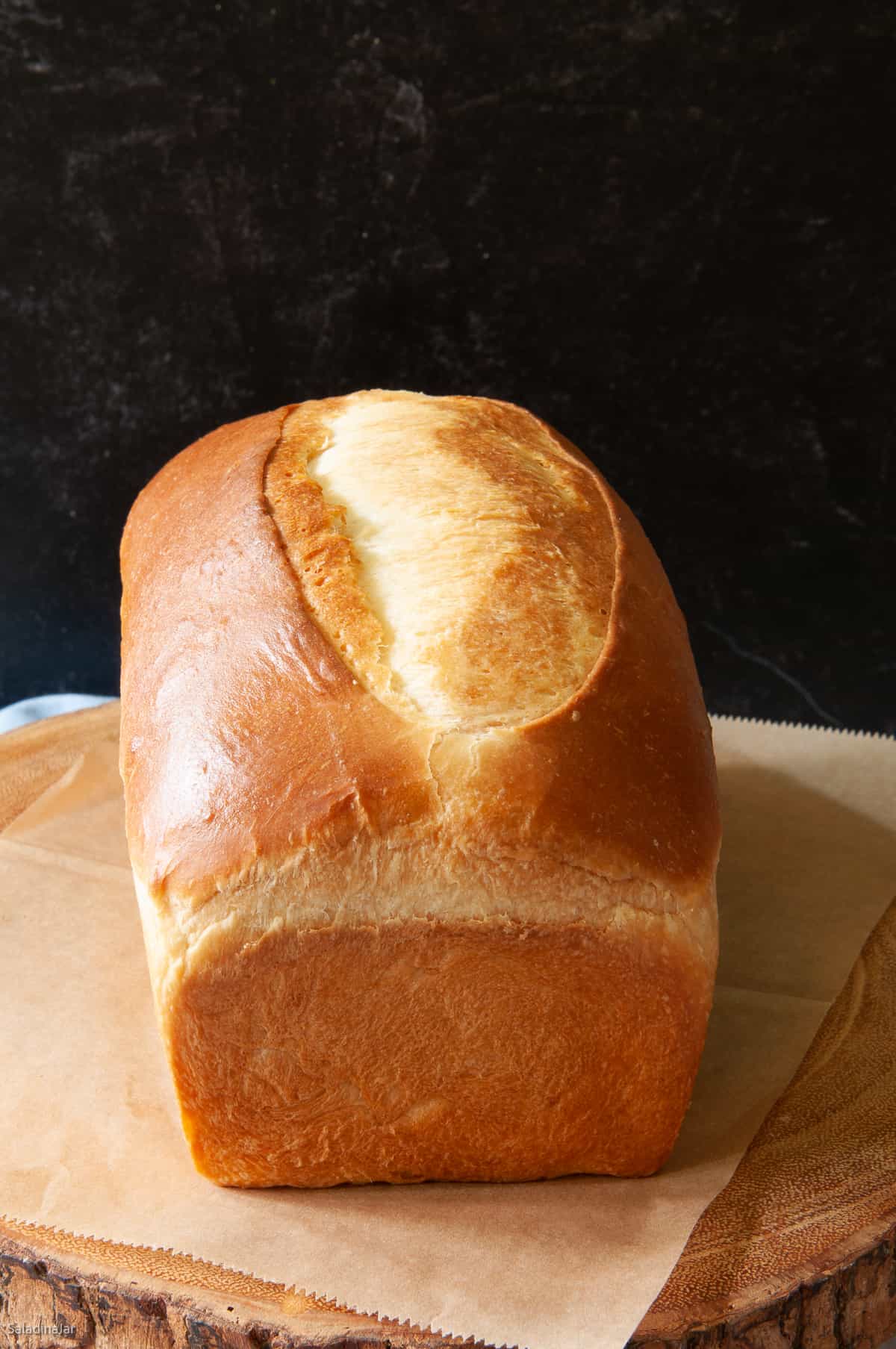
As an Amazon Associate, I earn from qualifying purchases.
Have you tried the basic white-bread recipe in your bread machine manual? I have a better idea if you weren’t in love with it. Try this buttermilk white-bread loaf and rest assured your efforts will reap mouth-watering rewards.
My two grandsons pronounced it the “best bread you’ve ever made.” But, of course, serving it alongside a big jar of Nutella didn’t hurt.
No worries if you don’t have a bread machine or bread maker. See the recipe notes for making this recipe by hand or with a stand mixer.
Happy Bakers Speak Up
“After several years of working on bread, mostly since March 13, 2020, this was the first 100% successful loaf! …This time I used your recipe and tips for Buttermilk Bread and used the machine for the dough only. This is a perfect loaf! Thank you so much!“–SHANA
Can I Make This Recipe from Beginning to End in a Bread Machine?
Yes. I call it “one-button” bread. If you are a new bread machine owner, you may think that was the only reason you bought a bread machine.
If all you need is bread to toast for breakfast or make jelly sandwiches for the kids, the one-button loaf might be good enough.
If you appreciate excellent bread or want to give your bread away, consider using the DOUGH cycle to mix the dough. Then, bake the loaf in your conventional oven for a much nicer crust and crumb texture. Keep reading for more details.
Why I Prefer To Make Bread with the Dough Cycle
Check out the comparison pictures below. The buttermilk sandwich bread baked in a bread machine is on the left. The bread on the right was mixed in a bread machine but shaped by hand and baked in a conventional oven.
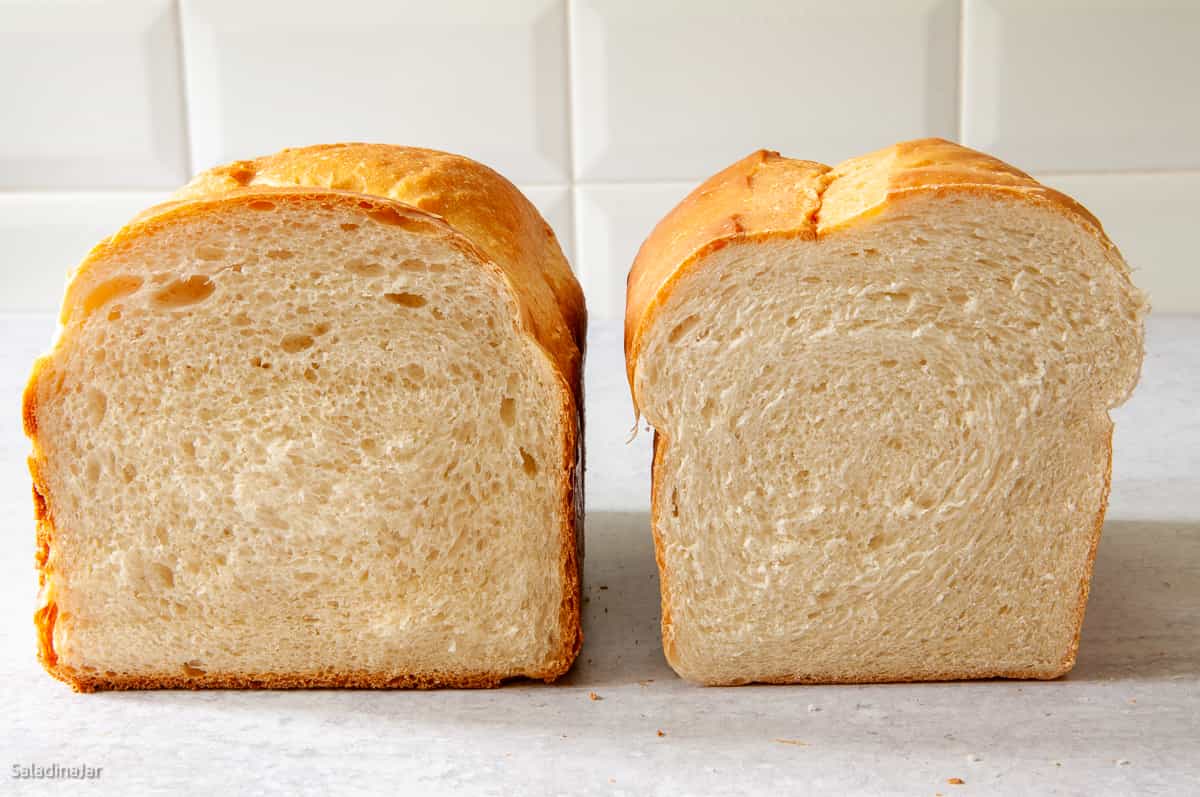
Also, compare the internal texture. The bread on the left is dense at the bottom and light and airy, with larger holes at the top. The bread on the right is more even throughout and has a lovely circular pattern that will prevent it from turning into crumbs when you make a sandwich.
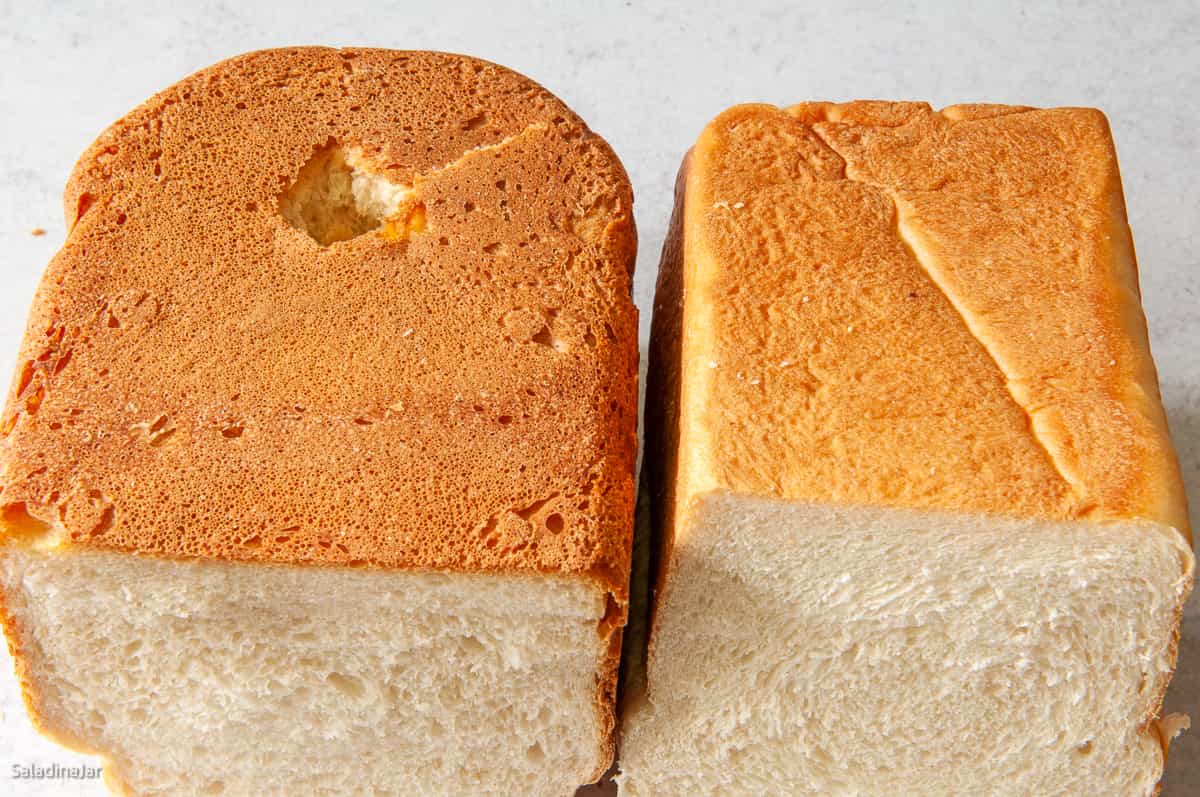
But you can reduce the size by catching the bread at the right time. Remove the paddles before the last rise and subsequent bake. Again, compare each loaf’s thickness, texture, and crust color.
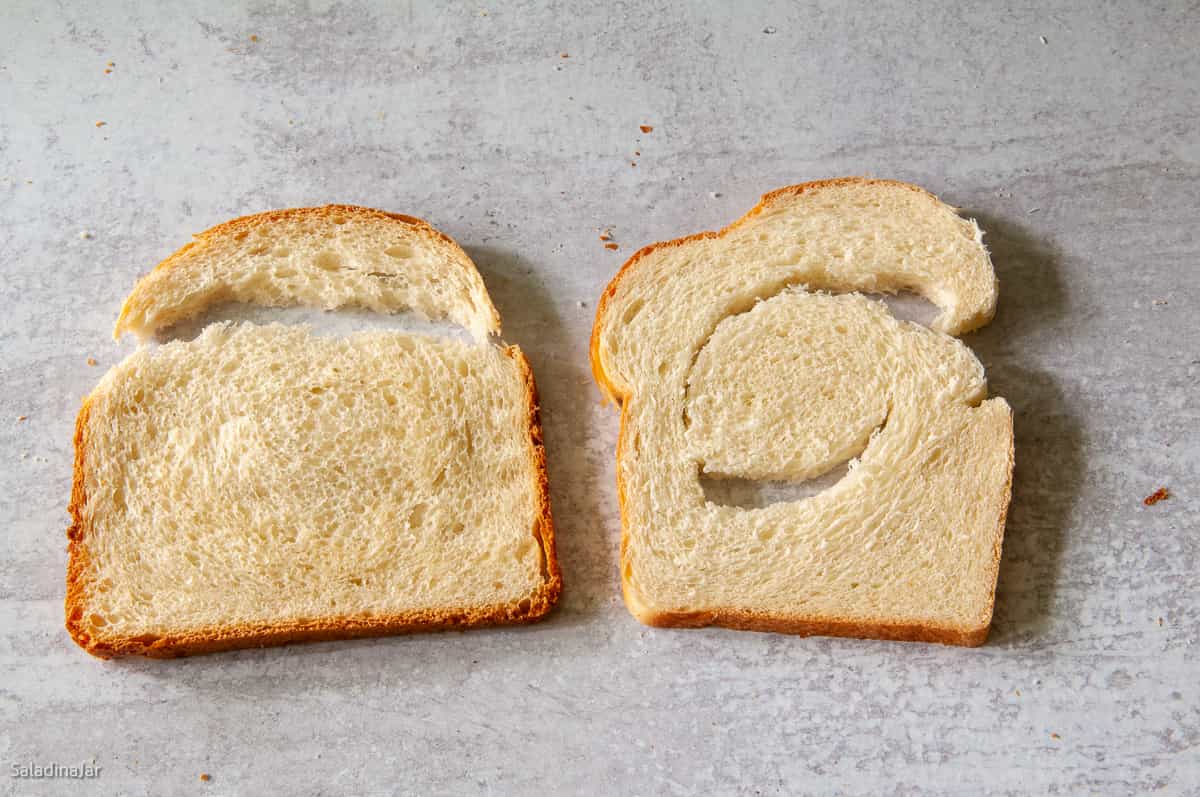
I tore each of the slices above by hand. You can see that the bread on the left tore unevenly. The bread on the right came apart along the original fold lines I made when shaping it.
Avoid dense loaves, crater tops, uneven browning, and cardboard crusts! Instead, use a bread maker for mixing and kneading only. Then, you do the shaping and baking for superior results.–a Paula-ism
Ingredients and Substitutions
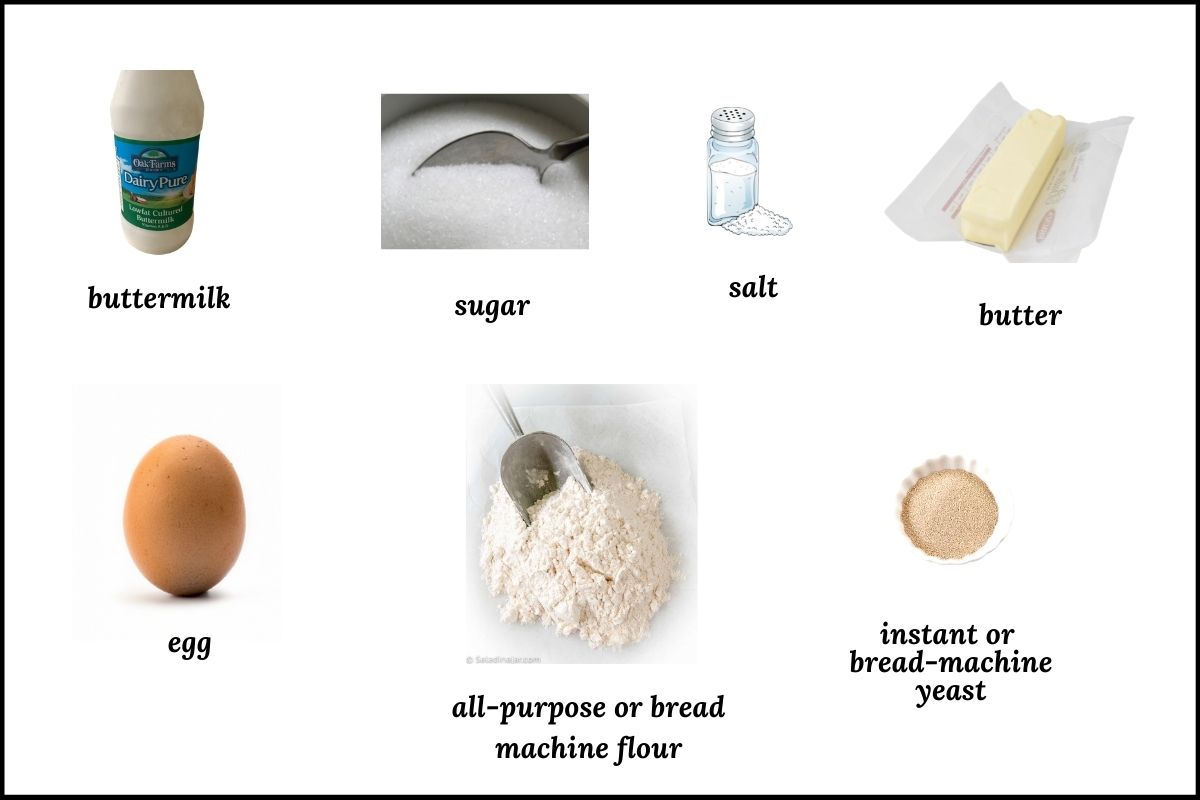
- BUTTERMILK: Buttermilk is the secret sauce in this recipe. It contributes to tanginess, tenderness, and moisture. No buttermilk in the house? Use powdered buttermilk.
- Another great substitute is yogurt whey + 3 tablespoons of dried milk powder. Or, try sour cream or yogurt thinned with some milk until it’s the consistency of buttermilk.
- Note: It is unnecessary to warm the buttermilk before you add it to the bread machine pan. The friction of the bread machine paddles will warm up the dough in a hurry.
- Not a fan of buttermilk? Make this recipe with dairy or non-dairy milk, such as almond or coconut milk. Your bread will still be fabulous, although you should probably change the name. 😜
- SUGAR: The granulated sugar in this recipe is negotiable. You need some for the yeast to snack on, but feel free to cut back to 1 tablespoon. If your sweet tooth is aching, add an extra tablespoon of sugar. Know that adding more sugar can slow down the rising process.
- Substitute honey for sugar.
- SALT: This recipe calls for table salt or sea salt. Add at least another ¼ teaspoon if you want Kosher salt. It’s OK to experiment with reducing the salt, but cutting it out completely may result in unexpected consequences.
- BUTTER: A little fat goes a long way in making the crust tender and the crumb moist. Substitute vegetable oil if you prefer.
- Note: Chopping the butter finely makes it unnecessary to warm the butter.
- EGG: Adding an egg adds a touch of richness to any bread recipe. If you prefer to skip the egg, add more buttermilk to compensate for it.
- FLOUR: Use all-purpose white flour or bread flour. White flour will produce softer bread. Bread flour will make a sturdier and chewier product that will rise a bit higher.
- Note that bread flour absorbs more liquid than all-purpose flour. You MAY need to add more liquid. Always check your dough while it’s kneading in the bread machine to see if you need to add more liquid or flour to make the dough stick to the side and pull away cleanly.
- I have not experimented with whole-grain flour in this recipe. If you do, be aware that it will make the bread heavier depending on the ratio of wheat flour to white flour.
- YEAST: I always specify bread machine or instant yeast in my bread machine recipes. It’s easier and doesn’t need to be “bloomed” or dissolved first.
- Active dry yeast is a viable substitute for instant yeast. It’s no longer crucial to dissolve it in liquid first like we used to. But it will help the yeast activate more quickly.
How To Make a Buttermilk Bread Machine Loaf
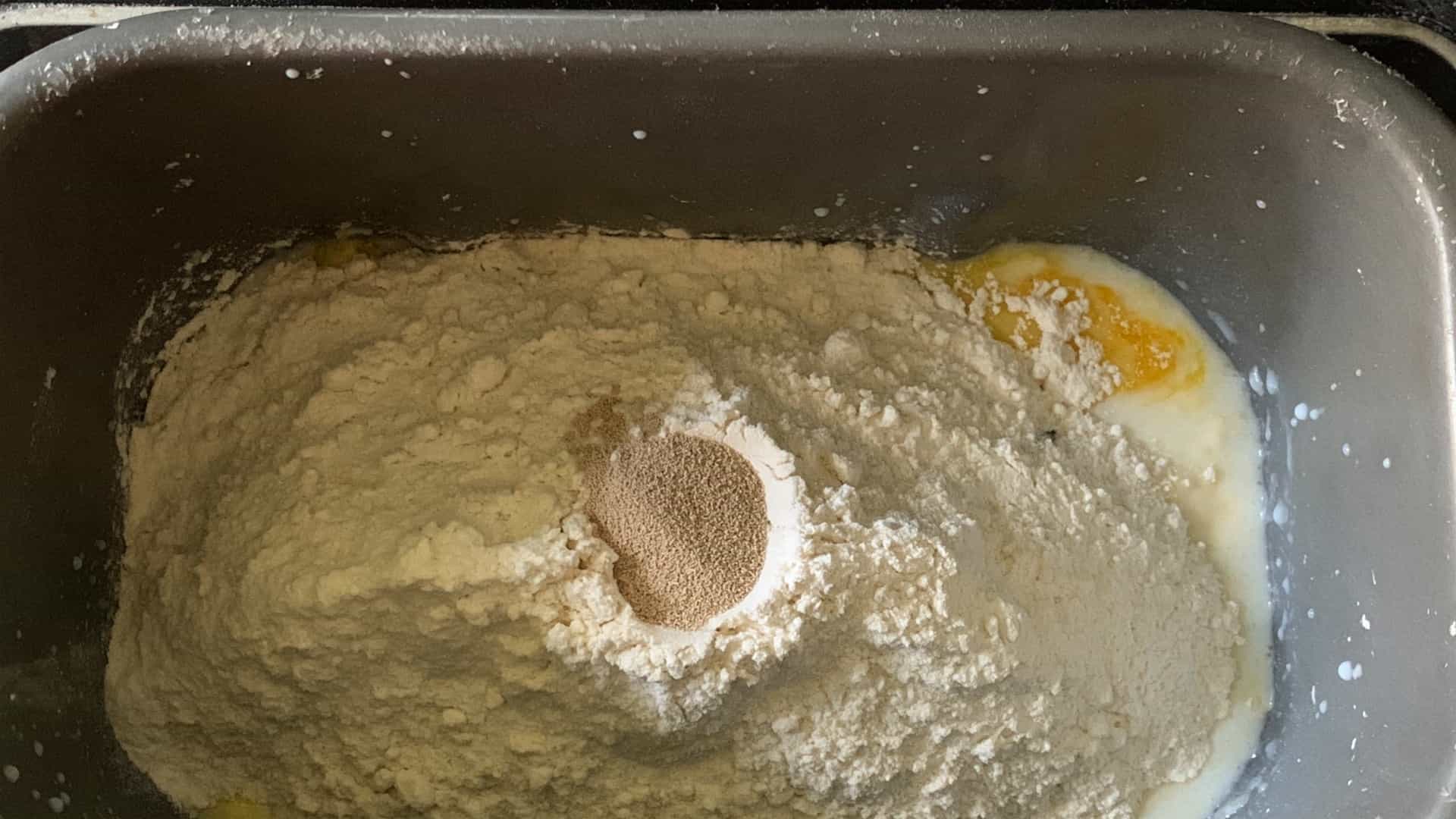
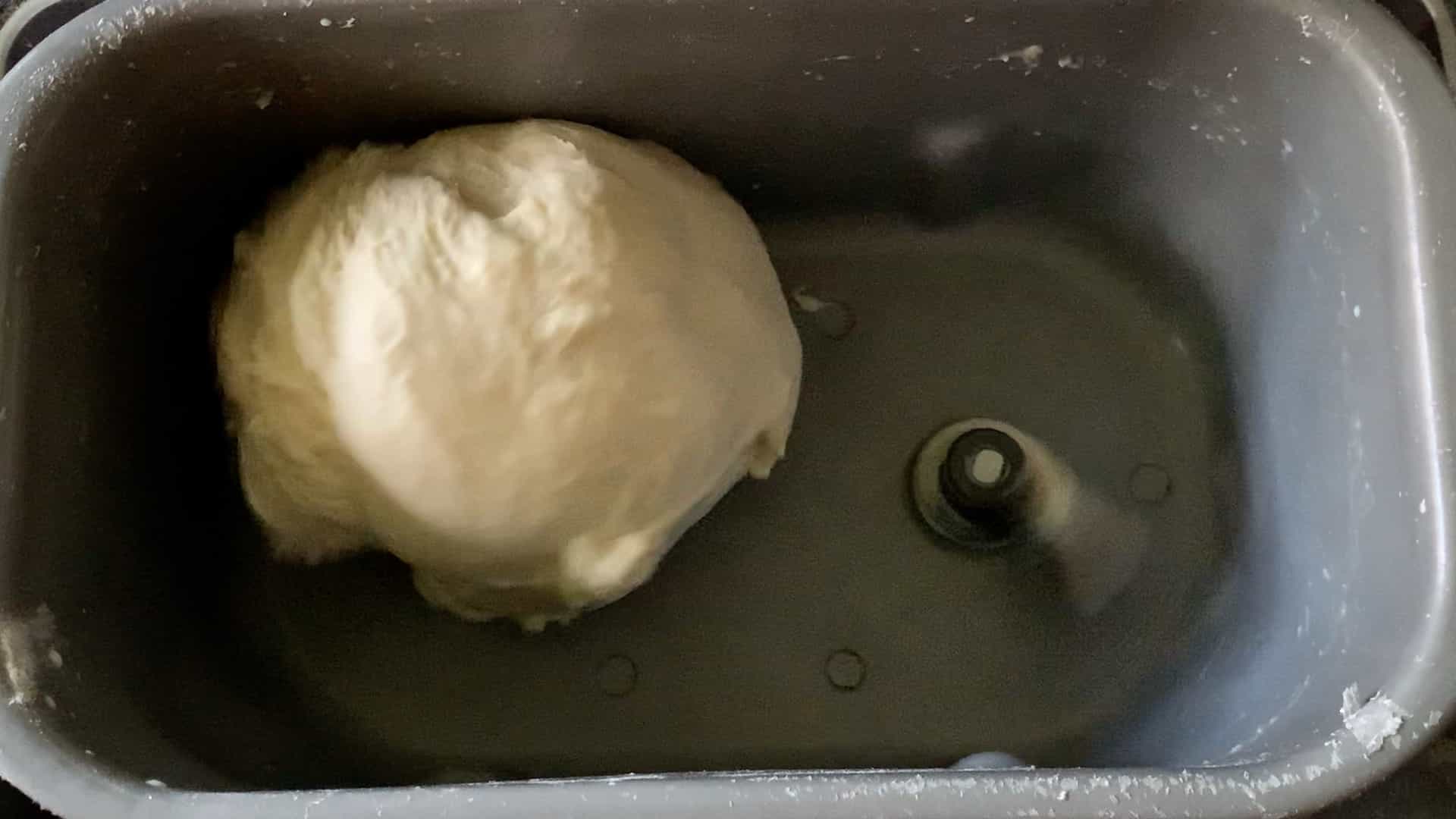
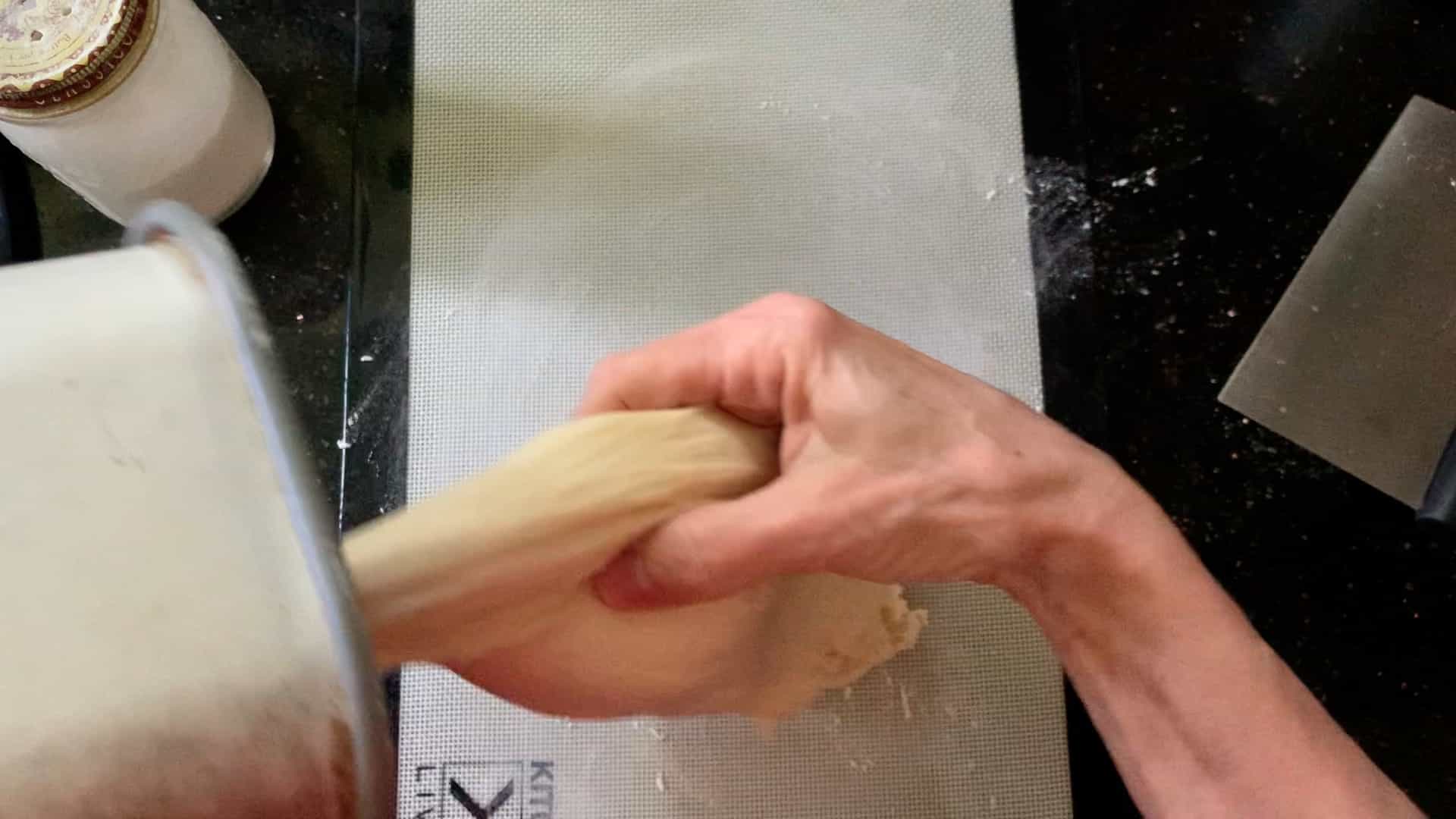
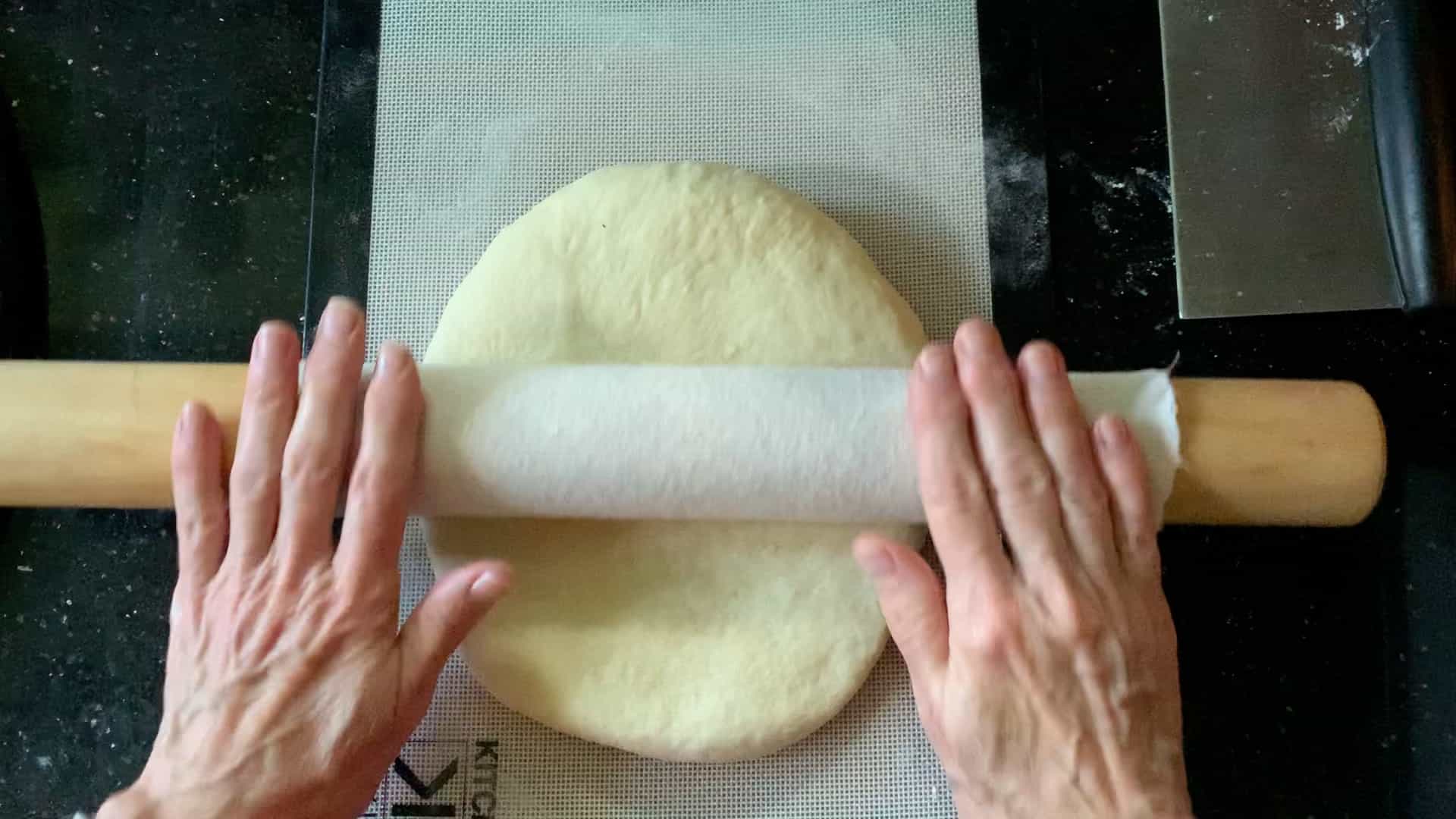
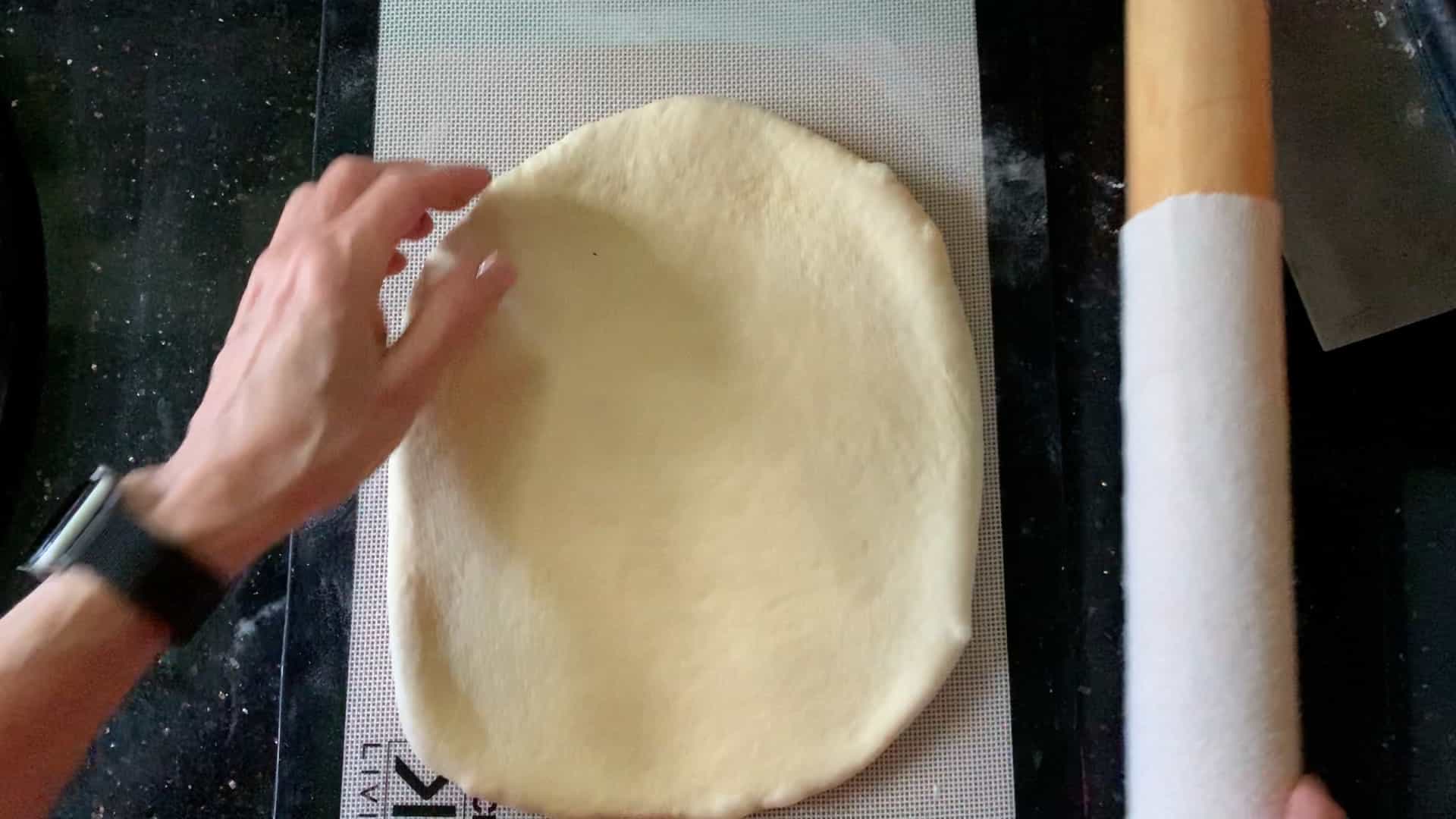
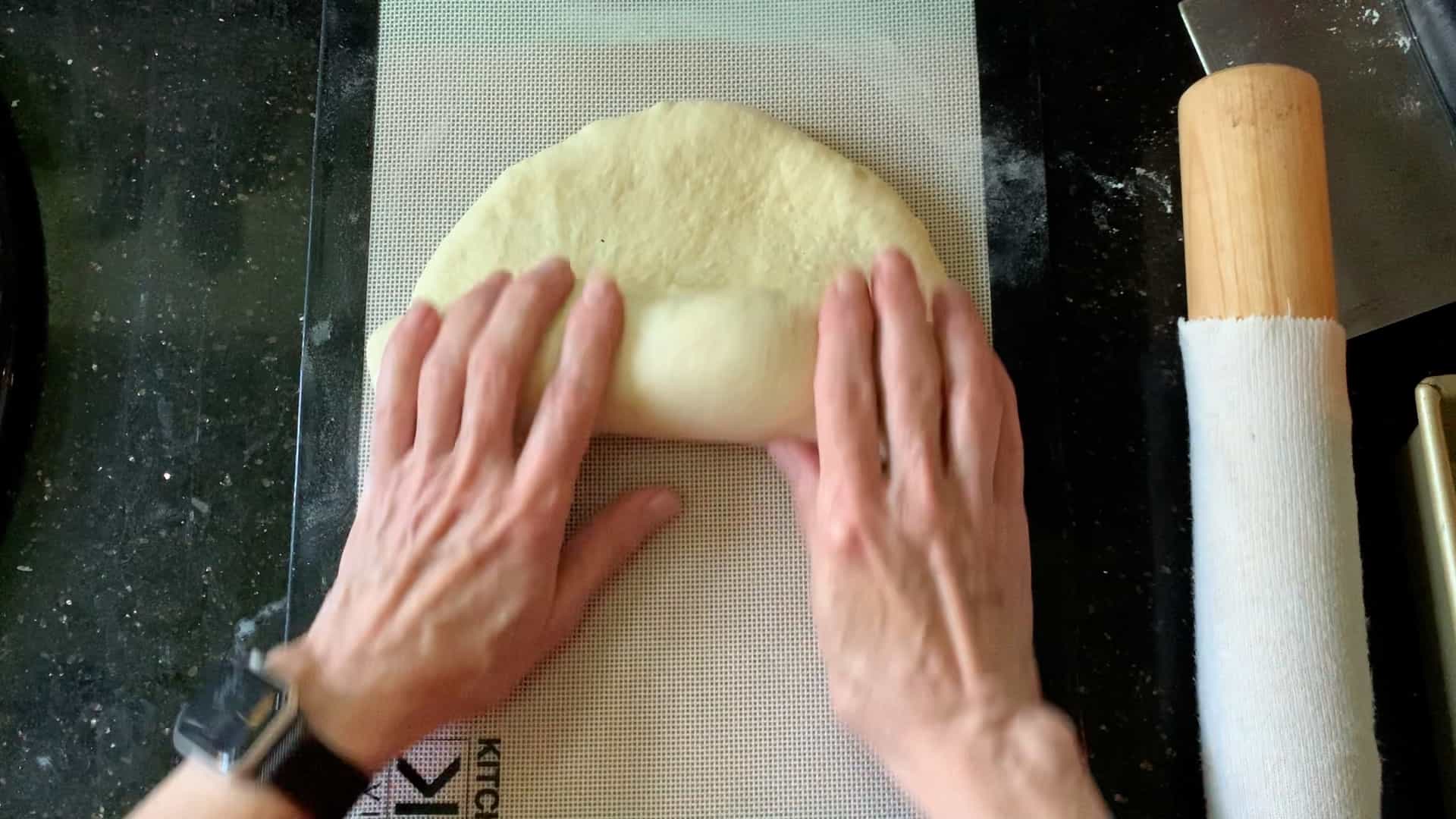
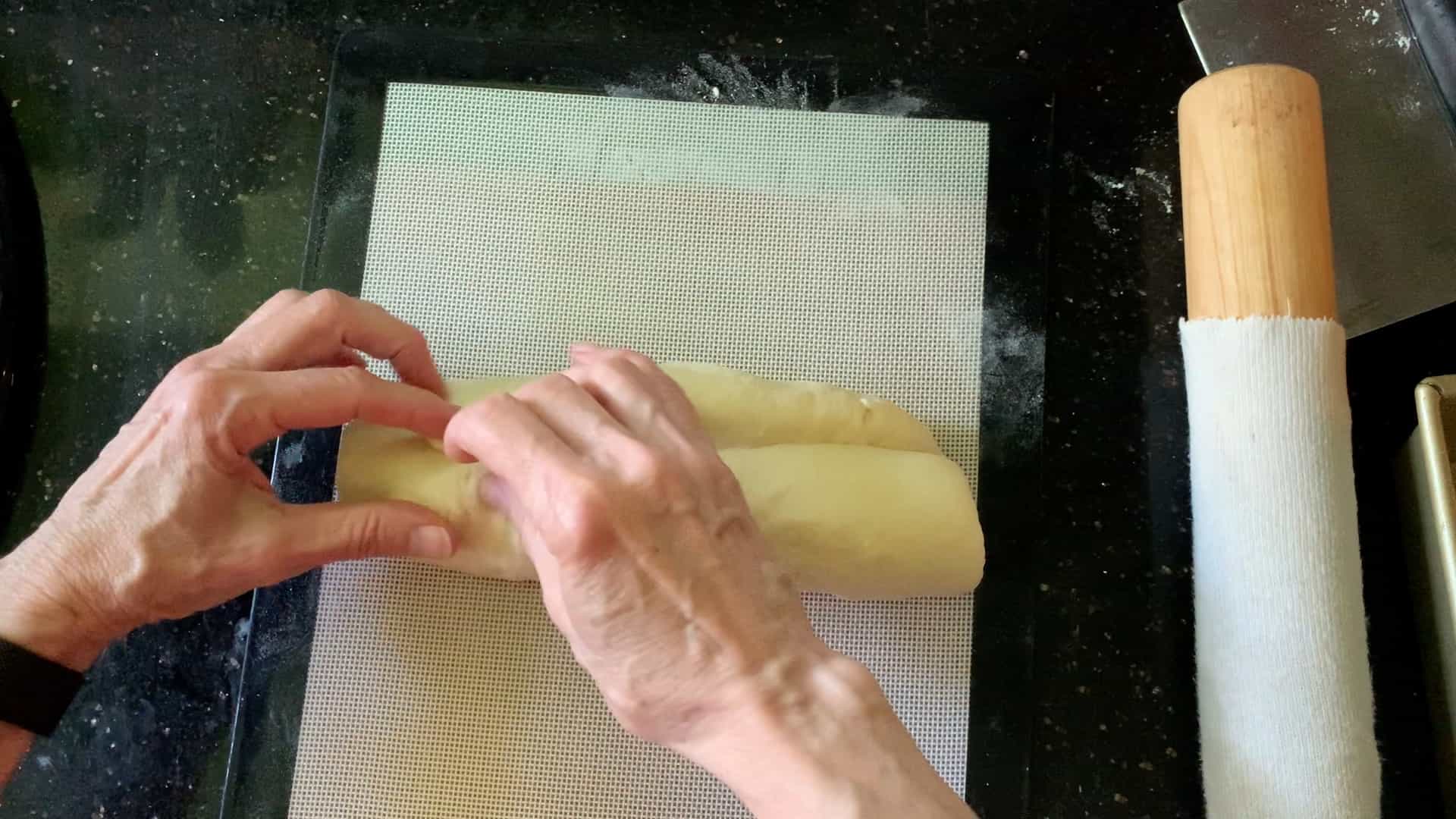
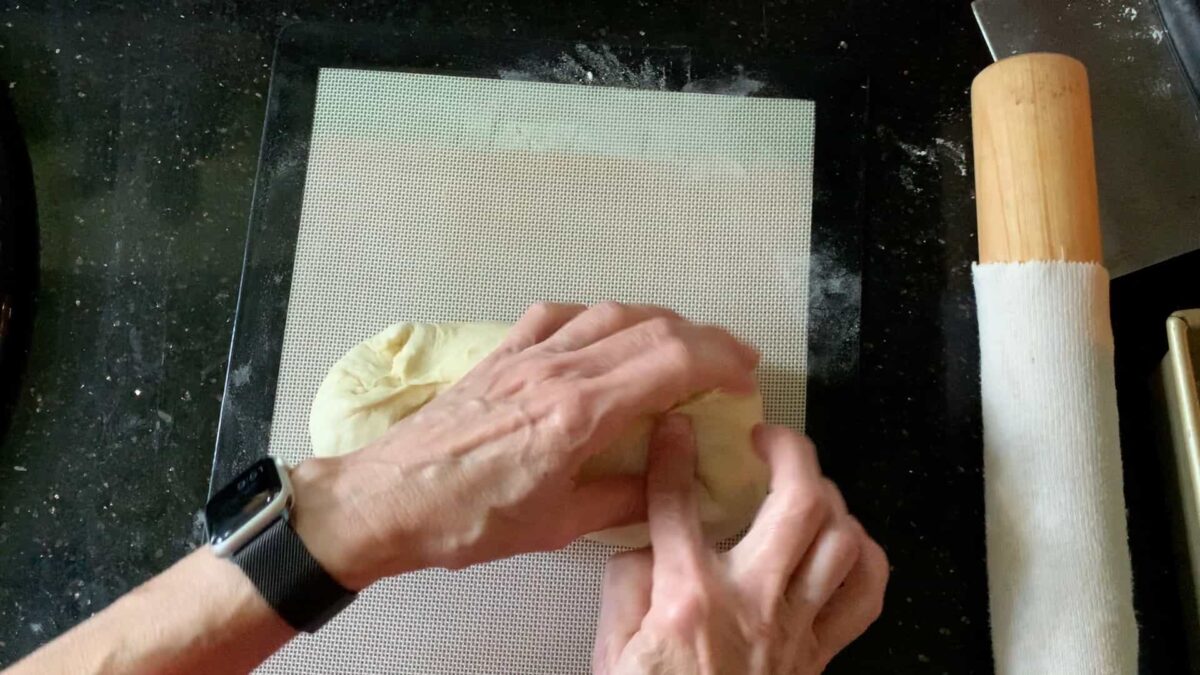
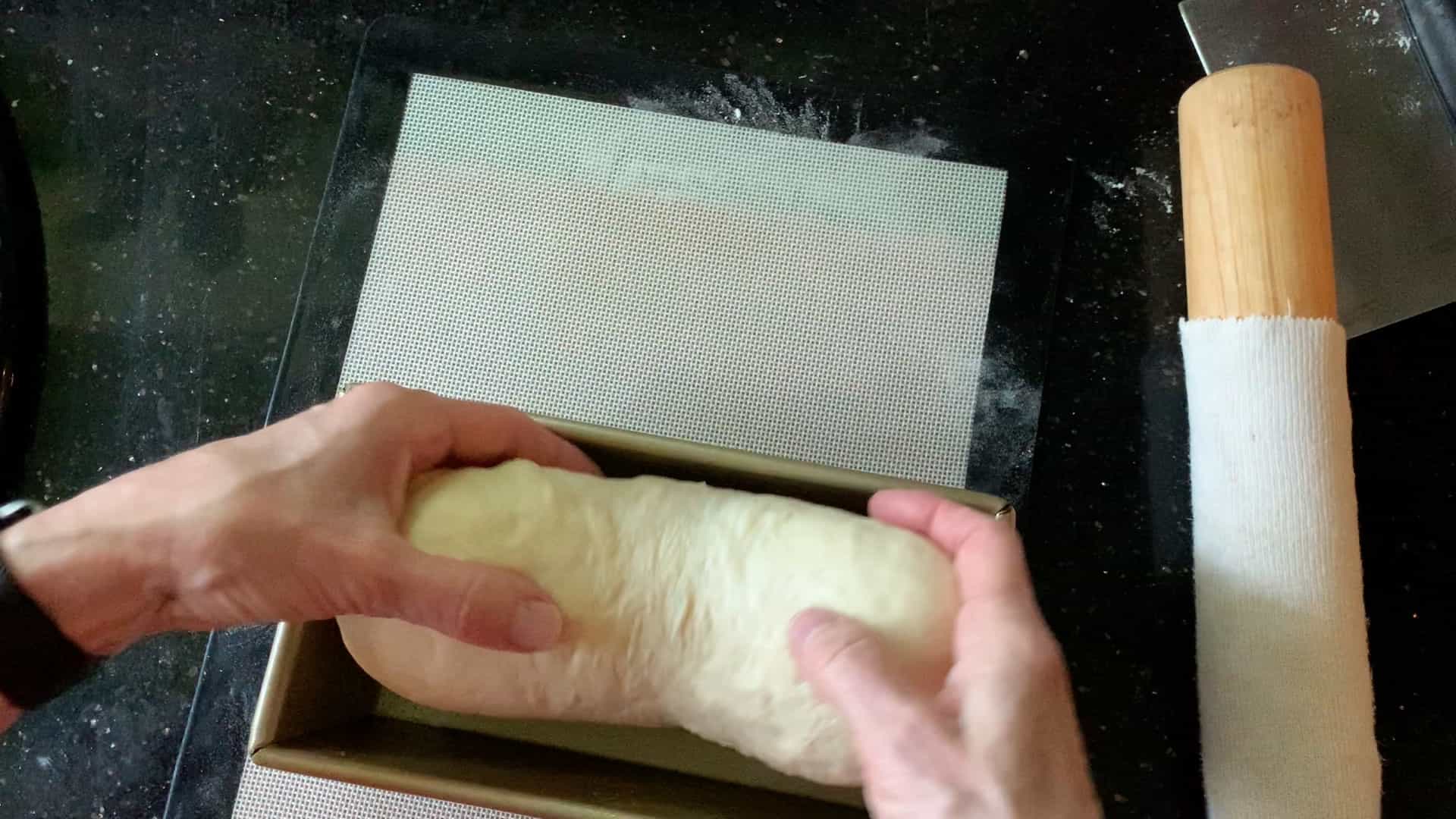
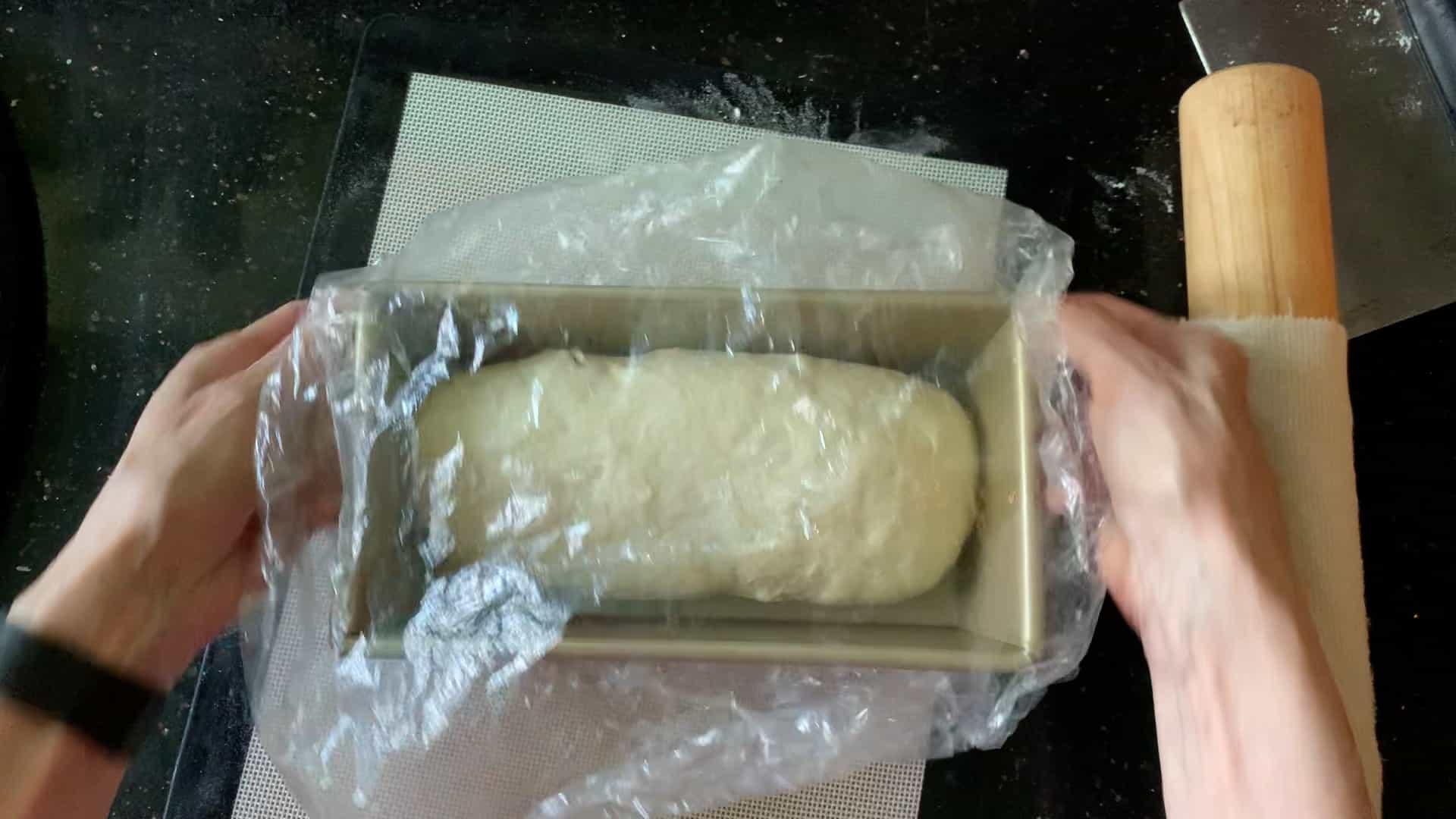
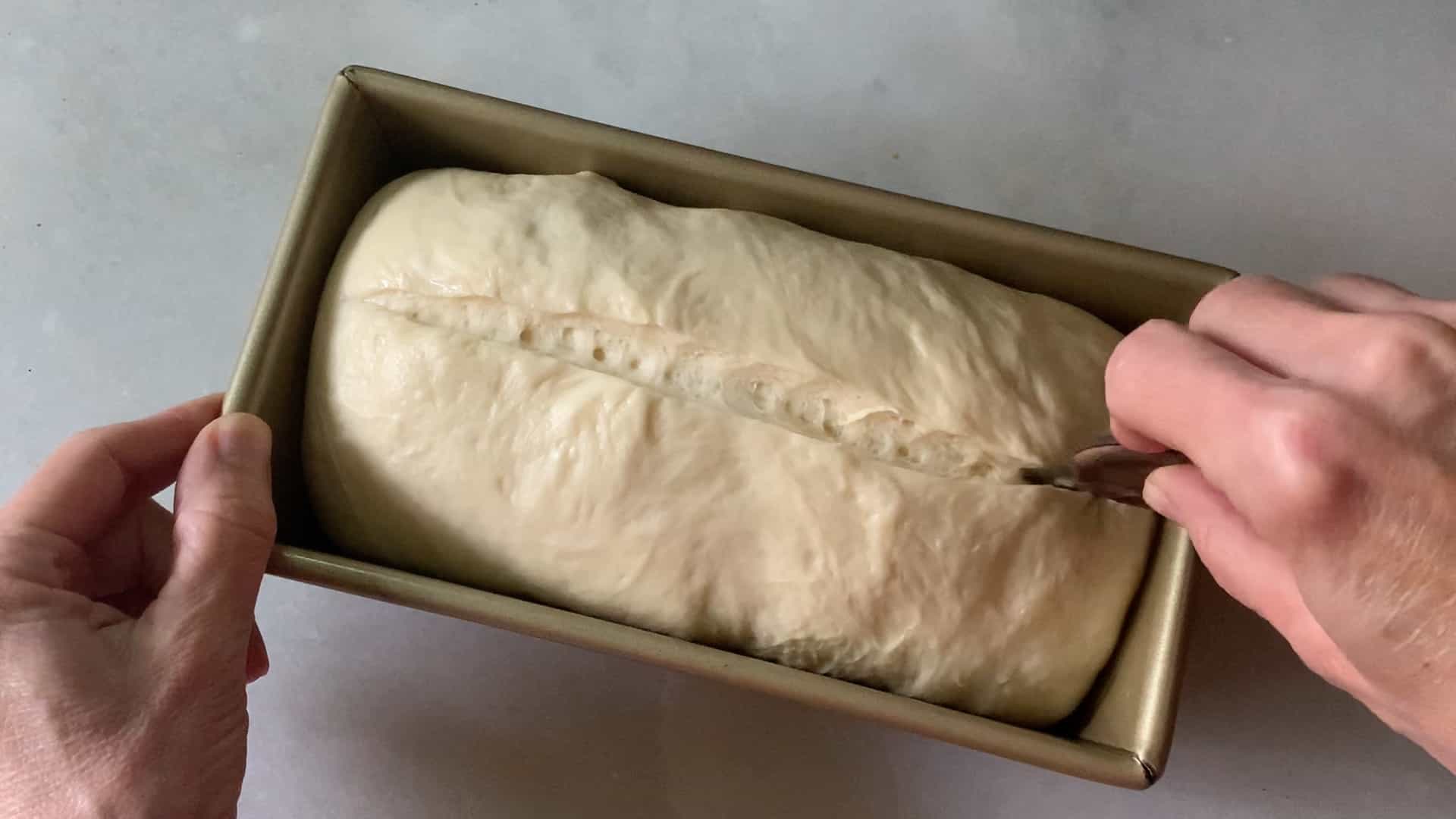
Bake at 350˚F for 30-40 minutes or until the internal temperature reaches 200˚F. Check with a quick-read digital thermometer (paid link).
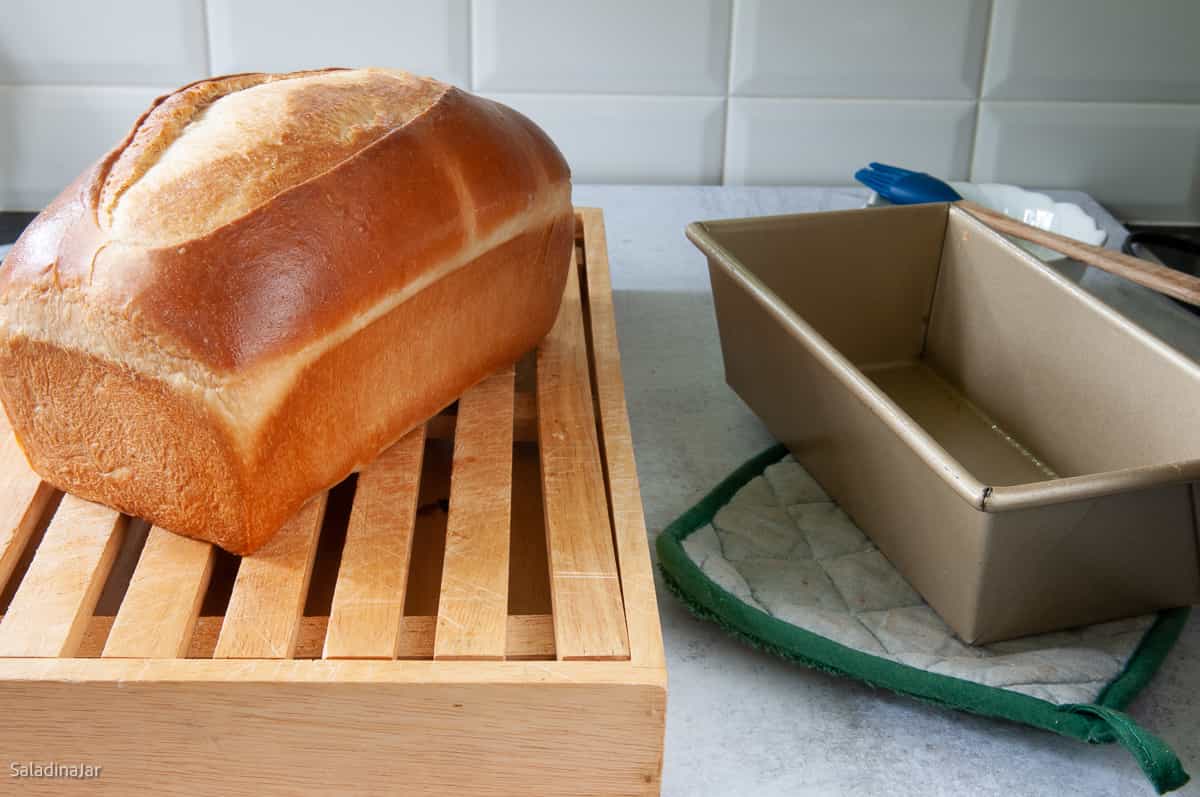
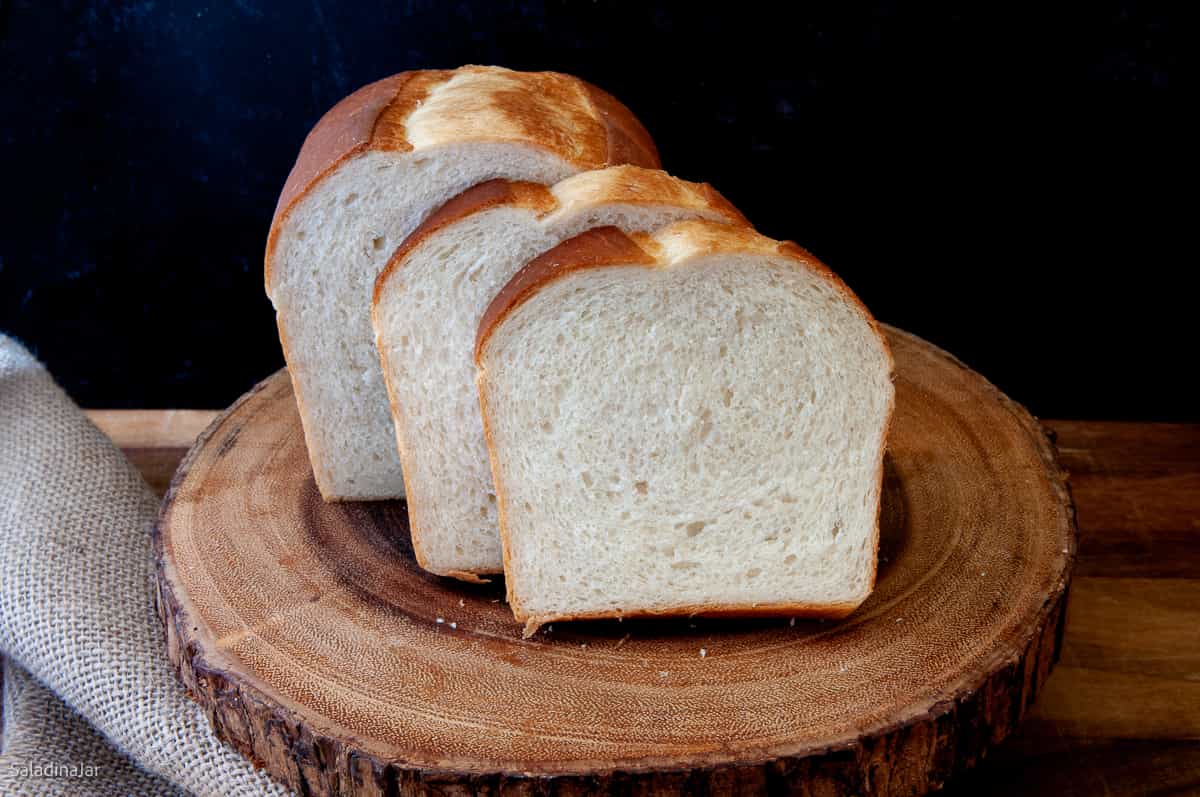
FAQs About Buttermilk Bread
The lactic acid in buttermilk makes bread tender and gives it a tangy flavor.
Yes, if you intend to make this bread from beginning to end with a bread machine. No, if you plan to use the DOUGH cycle to mix it. The rise time takes longer when the liquid starts cold. Here’s a secret: The longer your dough takes to rise, the better your finished bread will taste.
Portion leftover buttermilk for future recipes. Store each portion in a small plastic bag and freeze it.
The frozen buttermilk will likely curdle when thawed. Don’t worry. It is okay to use in baked products like muffins, pancakes, or this bread.
In this recipe, yes. No other ingredients, such as baking soda, are necessary when using milk. You can use water instead of buttermilk, but it won’t be as flavorful or rich.
Yes, you may do either. See the notes at the end of the recipe for details.
Yes, Use non-dairy milk or water for the liquid. Use vegetable oil or shortening (Crisco) for the fat.
Make it by hand or use a stand mixer. See the notes at the end of the recipe for more details.
Parting Thoughts: If you have always baked your bread in the bread machine, I hope I have convinced you to use the DOUGH cycle instead. Once you get into the habit, you will be excited about the bread that comes from your kitchen.
Recipe Help at Your Fingertips: For questions or suggestions, email Paula at saladinajar.com. If you need help, I’m happy to troubleshoot via email (faster than leaving a comment). Attach pictures and as many details as possible for the best advice.
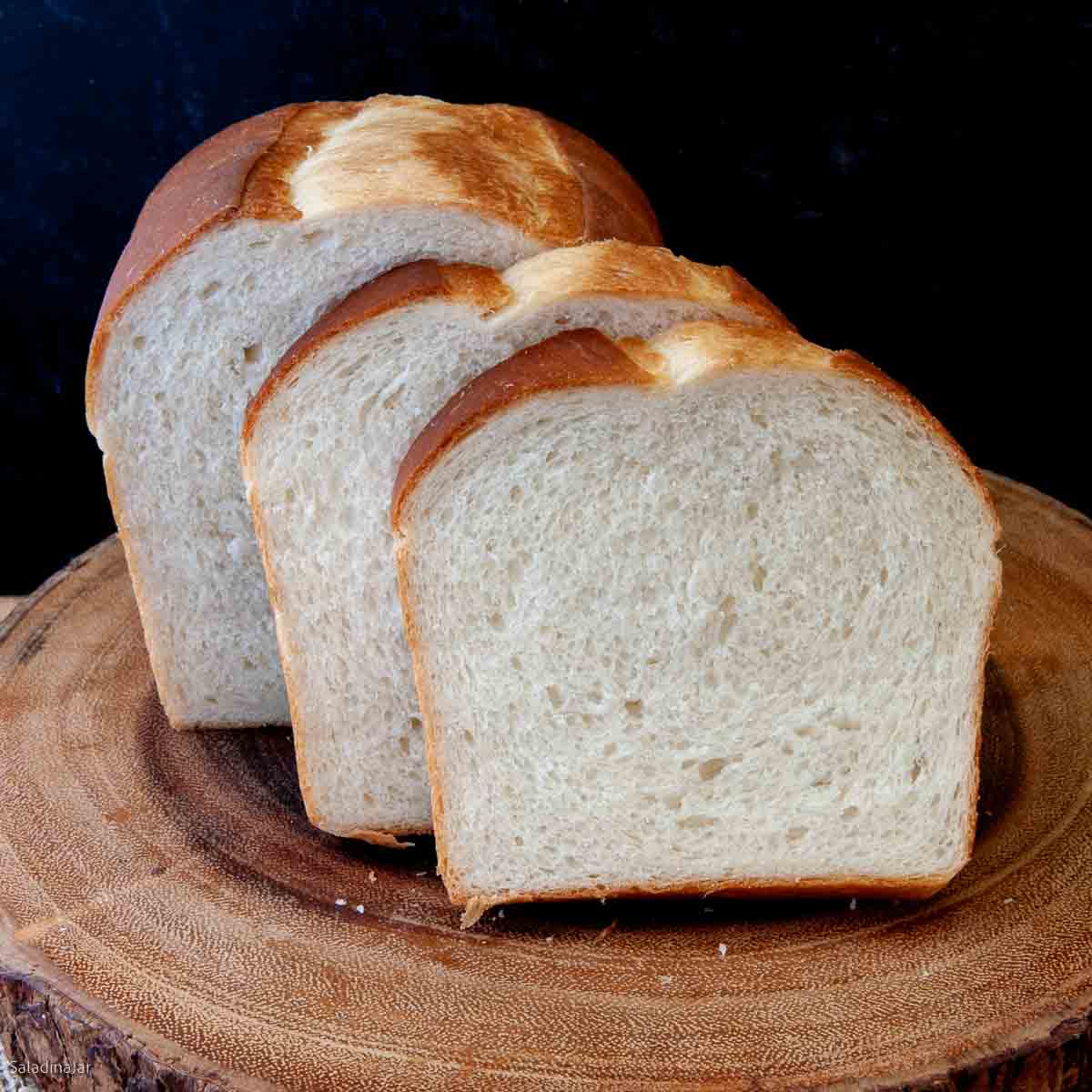
Buttermilk Bread Machine Bread Recipe
Rate this recipe
(5 stars if you loved it)
Video
Ingredients
- ⅞ cup (210 g) buttermilk
- 1 large (50 g) egg
- 2 tablespoons granulated sugar
- 1¼ teaspoon table or sea salt
- 1½ tablespoon (21 g) butter (finely chopped)
- 3 cups + 2 tablespoons (375 g) all-purpose flour
- 1½ teaspoon bread machine or instant yeast
Instructions
Mixing, Kneading, and First Rise:
- Combine all ingredients: ⅞ cup (210 g) buttermilk, 1 large (50 g) egg, 2 tablespoons granulated sugar, 1¼ teaspoon table or sea salt, 1½ tablespoon (21 g) butter (finely chopped), 3 cups + 2 tablespoons (375 g) all-purpose flour, 1½ teaspoon bread machine or instant yeast into bread machine pan in the order listed above.
- Select the DOUGH cycle and press START.
- Check the dough at least twice during the mixing and kneading phase by lifting the lid to take a peek. The first time, look immediately after the machine starts mixing to ensure the paddles are engaged correctly. Look again 15 minutes into the DOUGH cycle to assess the consistency of the dough. For most recipes, the dough should stick to the side, then pull away cleanly.If your dough is too wet, add flour one tablespoon at a time.Conversely, if the dough is too dry, add one tablespoon of liquid at a time until the dough looks just right. Read more about this surprising secret to success with a bread machine here.
- When the DOUGH cycle has finished, check the dough to be sure it has risen to double the original size. If so, remove the dough to a lightly-floured surface for shaping. If your kitchen is cold and the dough has not doubled in size, leave it in the pan until it does. Then remove it for shaping. If your kitchen is warm, check the size of the dough before the DOUGH cycle completes. The dough may need to be removed and shaped early to avoid overproofing.
Shaping and Second Rise:
- Shape dough with your hands or a rolling pin into a rectangle roughly 14 x 10 inches. If dough is too elastic to shape, cover with a tea towel and let it rest for 10 minutes before trying again.
- Be sure there are no large visible bubbles, especially on the sides of the rectangle. Press them out or pinch them with your fingers to avoid tunnels in your bread. Also, brush off any excess flour as you go.
- Starting from the short side nearest you, roll the dough into a cylinder. Try not to stretch the dough, but neither should it be too loose. Pinch the seam shut and pull up the ends toward the seam and pinch them closed.
- Turn the cylinder of dough over so you can see the smooth top. Drop it into a lightly greased 8½ x 4½-inch loaf pan or a 9 x 4 x 4-inch Pullman pan. Gently smoosh the dough with your palms to make it level throughout the pan.
- Cover with a cheap shower cap or a tea towel. Let rise until peaking over the edge of the pan.
Baking:
- About 15 minutes before you think your bread will be ready to bake, preheat your oven to 350 °F (180˚C).
- Brush the top of the loaf with melted butter. Make one slash down the middle with a sharp knife or a razor blade. Pop into the oven for 30-40 minutes or until the internal temperature is 200 °F (93˚C).
- Let cool for 5 minutes. Remove loaf from the pan and cool on a wire rack. To avoid squashing the loaf, let it cool at least 30 minutes before cutting.
Notes
- To make this recipe in a heavy-duty stand mixer: Add ingredients to the bowl in the same order. Turn on LOW to mix until all ingredients are moistened. Then, using a dough hook, turn the speed to 2 or 3. Continue beating/kneading until dough becomes smooth and elastic (about 5-10 minutes). Cover and allow to rise in a warm place. Deflate dough gently and shape as indicated in the recipe.
- If making by hand: Combine all ingredients into a shaggy ball in a large bowl. Turn dough out onto a floured surface. Knead with your hands until the dough becomes smooth and elastic. Kneading will likely take 10-20 minutes, depending on your experience. Place the dough ball into a greased bowl. Cover and allow to rise until double. Deflate the dough gently and shape as indicated in the recipe.
- Please note: You can substitute active dry yeast for instant yeast. Dissolving it first is optional. Active dry yeast tends to rise slower initially but will catch up eventually.
Equipment
Nutrition
All images and text ©️ Paula Rhodes for Salad in a Jar.com

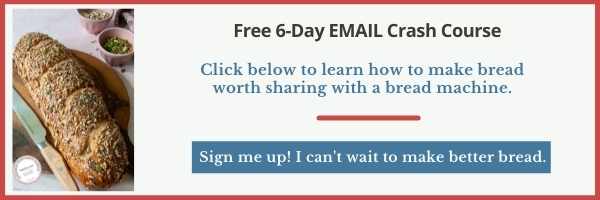

Paula Rhodes, owner
As a retired home economist, I created Saladinajar.com to share my belief that you don’t have to be a chef to find joy in creating homemade food worth sharing. Bread machines (used in an unconventional way), homemade yogurt, and quick microwave recipes are my specialty.